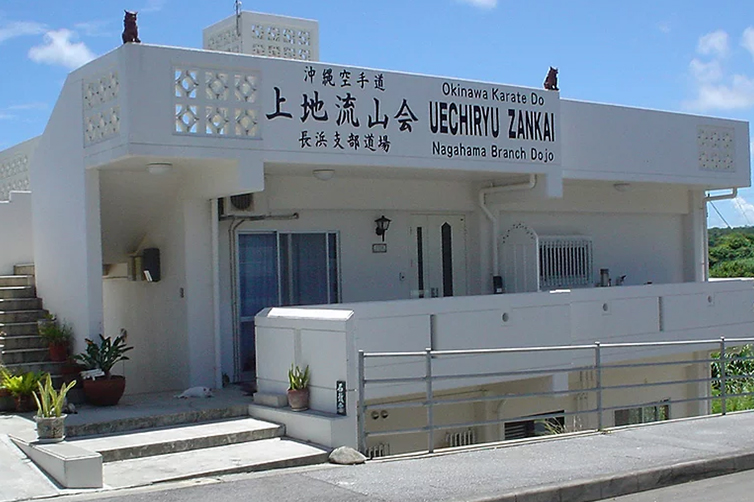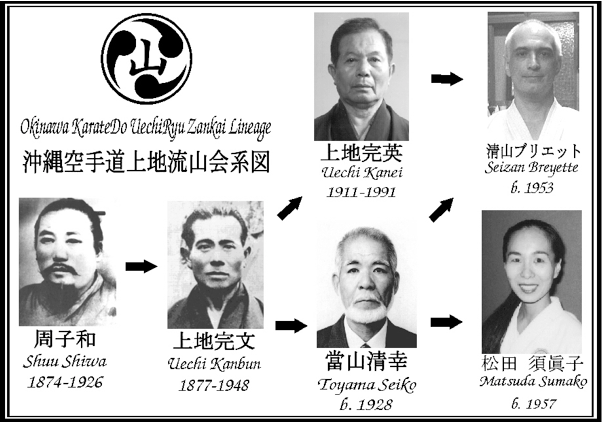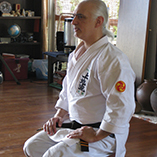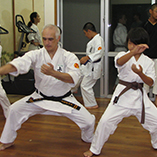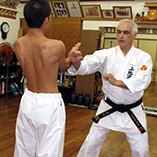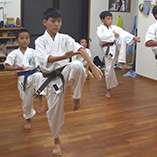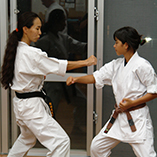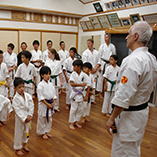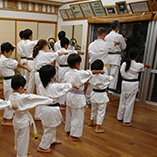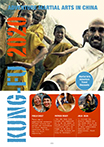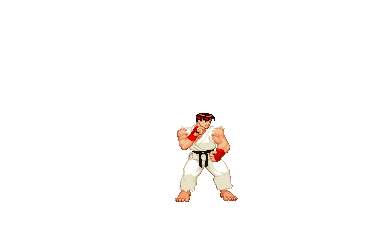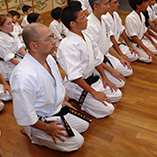 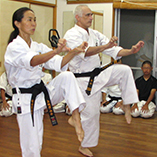 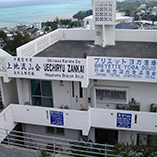
|
| UechiRyu KarateDo was originally a form of Chinese Boxing -- one of the pangainun (“tough-flexible”) systems. UechiRyu KarateDo is based mostly on Tiger Style Boxing, supplemented by additional animal styles. This system combines the movements of the tiger, dragon, crane, leopard, snake, mantis, and cobra.
Uechi Kanbun Sensei was born on 5 May 1877 in Izumi, a small village on the Motobu peninsula of northern Okinawa. In 1897, Kanbun Sensei left Okinawa for China to avoid conscription in the Japanese Army. In Fuzhou, Fukien Province of China, Kanbun Sensei met a young teacher named Shuu Shiwa, a master of Chinese Boxing. Shuu Sensei taught a system called Supreme Tiger Style Boxing. Kanbun Sensei studied every day for ten years. Eventually he was permitted to teach,and taught in China for three years. In 1910 Kanbun Sensei left China and returned to Okinawa.
Shortly after his return to Okinawa, Kanbun Sensei married and settled down to a life of farming. His son Kanei was born on 26 June 1911. Other children followed, and the Uechi family grew. Sixteen years after his return from China, Uechi Kanbun Sensei finally shared his art publicly once again. He left Okinawa in 1924 for employment in Mainland Japan, in Wakayama (near Osaka) where he began teaching in 1926. Kanbun Sensei and his senior students established a highly reputable dojo. Kanbun Sensei taught full time, and also made and sold medicinal compounds. By that time, the art of fighting without weapons was becoming known popularly as karate -- “Empty Hand”. It had previously been known as To-Di or To-Te (“Chinese Hand”). One kanji KARA means “Chinese” and is pronounced “kara” or “To” (as in “toe); the other KARA means empty, void, and sky.
Kanbun Sensei referred to the style as “Pangainun-Ryu Karate-Jutsu” (Tough-Flexible Method of Empty-Hand Skills), which only describes the manner of training and fighting. Kanbun Sensei returned to Okinawa after WW2 and moved to Ie Jima, an island just off the northwest coast of Okinawa. He died there in his 70’s. After his death, the system was renamed UechiRyu KarateDo (Uechi’s Method of the Way of Karate) by his son Uechi Kanei.
Kanei Sensei taught a modified version of his father's style. There are now many associations on Okinawa related to UechiRyu, all teaching slightly different but equally valid styles of the modern system. At the time of Uechi Kanei Sensei’s death in 1991, only one Wakayama Dojo student was still teaching the original old style – Toyama Seiko Sensei. Toyama Sensei was a student of Uechi Kanbun Sensei since 1938, and both student and colleague of Uechi Kanei Sensei since the early 1950’s. During the early 1970’s he quietly distanced himself from publicity and taught privately in his small dojo in Yomitan. Toyama Sensei was specifically named (on record) by Uechi Kanei Sensei as one of the two best instructors of UechiRyu on Okinawa (the other was Shinjo Seiyu Sensei). Toyama Sensei was the last instructor of his generation who taught Kanbun Sensei’s original performance style of UechiRyu. The original style is a purely personal protective Budo art, unsuitable for sport use, with an aim of polishing the character and spirit of the practitioner. Toyama Sensei passed away on 10 April 2009 at age 81.
G. Seizan Breyette ©2016 Okinawa KarateDo UechiRyu Zankyokai. All Rights Reserved. |
